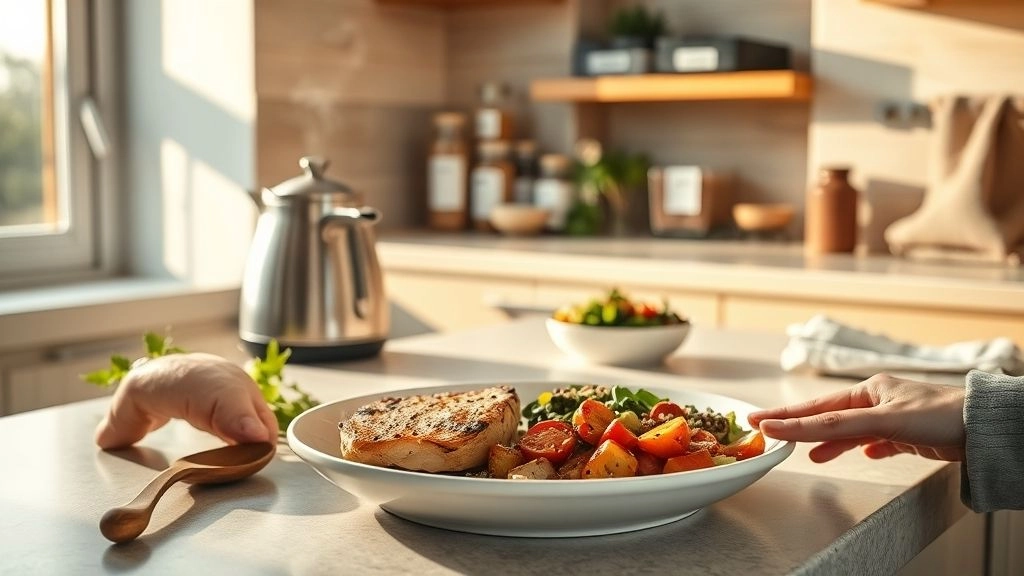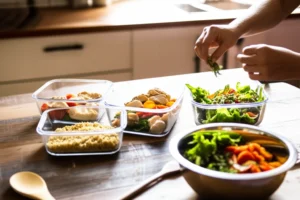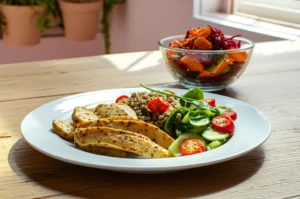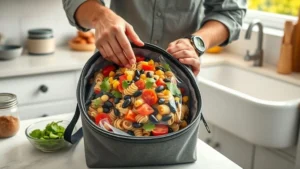Ever caught yourself thinking, “Man, just grabbing takeout is so much easier,” only to get hit with a bank statement that makes you wonder where all your money went? Trust me, you’re not alone. I’ve been there—those quick meal runs seem harmless until you look closer at the numbers. Today, we’re diving into the nitty-gritty of eating out vs eating at home cost, and why your wallet (and maybe your waistline) might just thank you for switching gears.
So, grab a cup of something warm (made by you, not a barista!) and let’s chat about how small shifts in meals can mean big wins in your budget—without turning your kitchen into a stressful ordeal.
Why It Costs
Does Eating Out Really Break the Bank?
At first glance, shelling out $15 for a burger combo doesn’t feel like a wallet-crusher… but here’s the thing. Eating out incorporates a whole bunch more than just the food itself. Think about it—restaurants pay for rent, staff, utilities, and all the little extras like nice plates and music. Those costs get passed on to you.
Research from Top Nutrition Coaching shows an eye-popping fact: The average meal at an inexpensive restaurant runs about 285% higher than a homemade meal. That’s basically $16.28 versus just $4.23 when you cook at home. No wonder the typical American family ends up spending around $225 a month on eating away from home—that’s over $2,700 a year!
So yeah, your casual midweek dinner out is doing a sneaky little number on your budget. And if you’re hitting takeout multiple times a week, that adds up fast.Eating out vs cooking at home Statistics back this up, showing just how massive the difference can be.
Hidden Costs That Stack Up
And don’t forget about delivery fees, tips, and the tempting extras. That “just a meal” can quickly turn into a costly habit. One study found the average American spends $1,200 annually just on fast food, and almost everyone’s dipping into that weekly. Crazy, right?
When you add it all up—the cost of the meal, drives, tips, and impulsive sips or desserts—it can feel like you’re paying for a night out, not just dinner.
Why Does Eating Out Feel So “Worth It”?
I get it. Fast food or takeout is quick, effortless, and sometimes just exactly what you need after a long day. Plus, no dishes to wash, no mess to clean up. Imagine the time saved—it’s tempting.
But here’s the catch: The time and convenience come at a steep price. And ironically, if you’re trying to budget, that’s usually the part that kills your efforts.
Cooking Wins
Is Cooking at Home Really Cheaper?
Short answer: yes! And sometimes massively so. When you cook at home, you control ingredients, portions, and waste. Plus, you can stretch meals into leftovers and lunches, making every dollar work overtime.
A home-cooked meal often costs about $4 to $6 per person, while the same meal out could be $15 to $20—or way more. That means you’re saving roughly $10 or more every time you choose to cook—which can add up to hundreds a month.
And it’s not just me saying this. The numbers from Eating out vs eating at home pros and cons show how cooking at home is a practical, cost-effective way to eat well without sacrificing taste or health.
Quick Meal Savings Table
| Meal | Eating Out Cost | Cooking at Home Cost | Money Saved |
|---|---|---|---|
| Burger & Fries | $12 | $4 | $8 |
| Spaghetti Dinner | $18 | $5 | $13 |
| Family Pizza | $30 | $10 | $20 |
What About Effort and Time?
Okay, cooking isn’t always as speedy as running out for takeout, but hear me out. If you stick to simple, quick recipes—think sheet pan dinners or one-pot wonders—you can whip up tasty meals in 30 minutes or less. Plus, batch cooking means you’re saving time later by just reheating, which is way cheaper (and healthier) than ordering again.
And if you’re worried about missing out on favorites, some folks find that recreating those takeout meals at home is a game-changer. It’s like having your pizza and the satisfaction of making it too! This idea fits perfectly with advice from Take out vs cooking at home pros and cons.
Takeout Temptations
When Is Takeout “Worth It”?
Look, we all have those nights when the idea of chopping and stirring is laughable. So, should you just surrender to takeout? Not necessarily.
Sure, sometimes it’s downright necessary—say, for a weeknight after an exhausting day or a treat for the family. The key is moderation. Eating out occasionally can still fit into your budget if you plan around it.
And yes, some meals are tricky to make at home without special equipment or ingredients. Think: tandoori chicken or fancy sushi rolls. In those moments, splurging may make sense. Just don’t let it become the norm.
If you want to dig into this balance, this thoughtful take on Eating out vs eating at home pros and cons gives a great overview of when takeout might tip the scales.
How Much Can You Actually Save?
Let me toss some numbers your way. Say you eat out five nights a week at $15 per meal—that’s $75 a week, or nearly $300 a month. Cook some or all of those meals, and you easily save $150–$200 monthly.
One cool shout out from a study showed that cooking the same dinner you’d get at a mid-scale chain restaurant can cost only about half as much at home, even factoring in grocery prices. The kicker? You get leftovers and healthier ingredients thrown in.
Compare Partial Takeout vs. Full Home Cooking
| Number of Takeout Meals Weekly | Average Monthly Cost | Estimate Monthly Savings Cooking at Home |
|---|---|---|
| 5 Meals | $300 | $150–$200 |
| 3 Meals | $180 | $90–$120 |
| 1 Meal | $60 | $30–$40 |
Frugal Tips To Stretch Your Food Budget
Simple Habits That Boost Savings
Now, you might be thinking, “This all sounds great, but I’m not ready to become a full-time chef.” No worries. The switch doesn’t have to be all or nothing. Try easing in with:
- Planning meals ahead. It’s amazing how much curb you put on impulse buys when you shop with a list.
- Taking advantage of sales and buying in bulk for staples like rice, beans, and frozen veggies.
- Getting creative with leftovers. Leftover roast chicken = next day’s sandwiches or salads.
- Keeping recipes simple. You don’t need dozens of fancy spices or specialty tools to make great food.
Working these into your routine can chip away at food costs, and you’ll notice your kitchen skills leveling up without the stress.
Healthy Minds, Healthy Wallets
Beyond cash, cooking at home often aligns with healthier food choices. You avoid the mystery ingredients, excessive salt, and hidden sugars typical of many restaurant meals.
That’s backed by nutrition research showing folks who cook regularly tend to have better diet scores compared to frequent eaters out. Which means you’re not only saving money but also investing in your long-term health. Pretty sweet deal, huh?
The Nitty-Gritty: A Friendly Reminder
It’s Not About Perfection
Look, I’m not here to shame anyone who loves a good burger joint or a celebratory dinner out. The point is to have the info you need to make choices that align with your goals, whether that’s saving money, eating healthier, or both.
Even cutting back a little on takeout can make a big dent in your expenses—and you won’t feel deprived. I bet you’ll find yourself experimenting, enjoying the extra control over your meals, and possibly even surprising your friends with your new cooking skills.
Think About This
Have you ever noticed how turning down the volume on eating out just a bit frees up your budget for other things you really want? Like that weekend getaway, an emergency fund boost, or simply less stress around money. Food should nourish all parts of life, including your financial well-being.
Wrapping Up
So here’s the bottom line on eating out vs eating at home cost: Cooking at home is almost always kinder to your budget—and your health—than dining out regularly. The numbers don’t lie. You’re looking at savings of hundreds, even thousands, a year by swapping a few takeout meals for homemade ones.
But beyond the cash, it’s about control, learning, and maybe even a little joy at creating your own delicious meals. Nobody expects you to go from zero to gourmet overnight. Start small, savor the wins, and watch those savings grow.
Ready to give your stove some love and your wallet some breathing room? Trust me, it’s worth it. And hey, how about sharing this with friends who could use a little money-saving pep talk? We’re all in this together!













